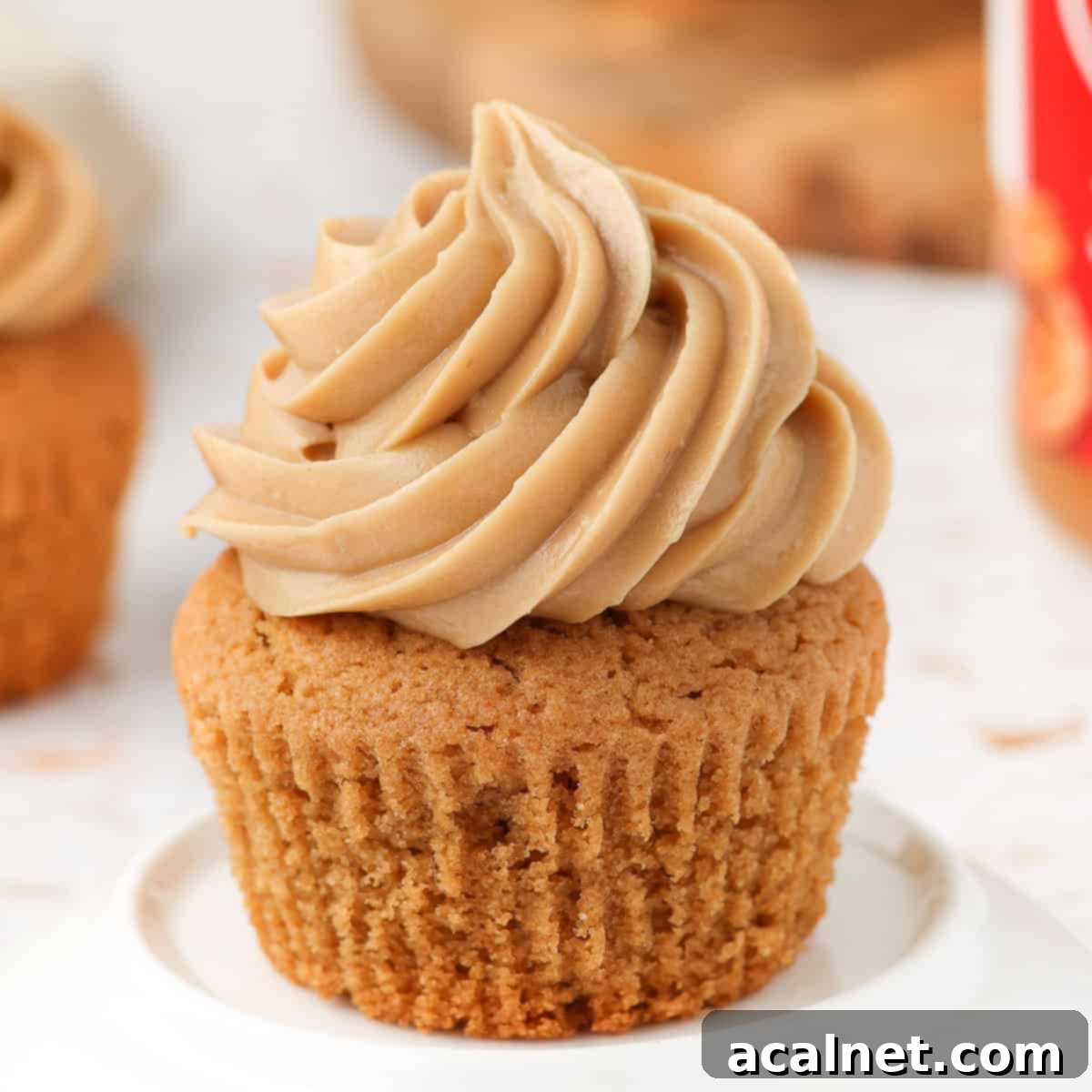The Ultimate Biscoff Cookie Butter Cream Cheese Frosting: Easy 4-Ingredient Recipe
Welcome to your new favorite frosting recipe! This luscious Biscoff Cookie Butter Cream Cheese Frosting is incredibly easy to whip up, requiring just 4 simple ingredients. Its unique, spiced flavor profile and wonderfully creamy texture make it the perfect versatile topping for all your baked goods. Whether you’re decorating festive cupcakes, filling delicate cookies, or frosting an elegant layer cake, this Biscoff-infused delight promises to elevate every bite.
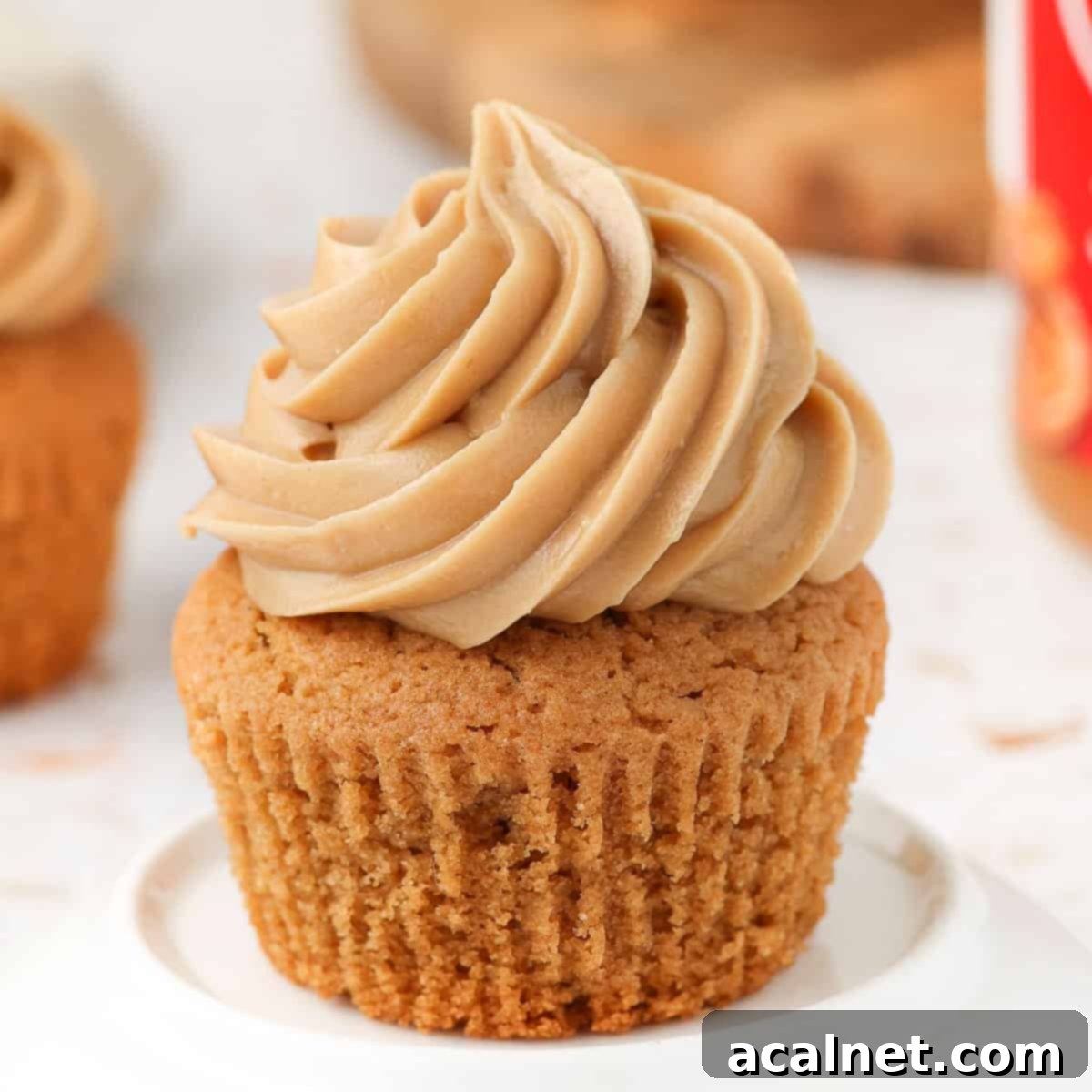
Why You’ll Adore This Biscoff Cream Cheese Frosting Recipe
There’s a reason Biscoff spread, also affectionately known as cookie butter, has taken the baking world by storm. Its distinct caramelized flavor with warm hints of cinnamon and other spices is utterly irresistible. By incorporating this delightful spread into classic cream cheese frosting, we unlock a whole new level of flavor and texture that is truly exceptional. And the best part? You only need four ingredients to achieve this magical transformation!
What makes this Biscoff Cream Cheese Frosting truly stand out is not just its incredible taste, but also its remarkable stability. The cookie butter not only infuses the frosting with a super delicious, warm, and spicy essence, but it also naturally helps to stabilize the cream cheese, allowing you to use less powdered sugar compared to traditional cream cheese frostings. This results in a less overtly sweet, yet perfectly balanced and robust frosting that holds its shape beautifully for piping and spreading.
This frosting is a dream come true for Fall and Winter desserts, making it an absolute must-have around the Holidays and Christmas. Its comforting spice notes perfectly complement seasonal treats. Imagine it as a decadent topping for this Easy Biscoff Cake, or as a rich and flavorful filling between layers of your favorite festive cake. It’s equally fantastic over Biscoff Cupcakes and Biscoff Muffins, piped lavishly over Mini Biscoff Cheesecakes, or even spread generously over a No-Bake Biscoff Cheesecake. For a fun twist, use it as the creamy center for sugar cookie sandwiches, transforming a simple cookie into an extraordinary dessert.
Essential Ingredients for Your Biscoff Frosting
Creating this irresistible cookie butter frosting is surprisingly simple, thanks to its minimal ingredient list. Each component plays a crucial role in achieving the perfect balance of flavor, texture, and stability. Here’s a closer look at what you’ll need to gather (scroll down to the recipe card for exact quantities):
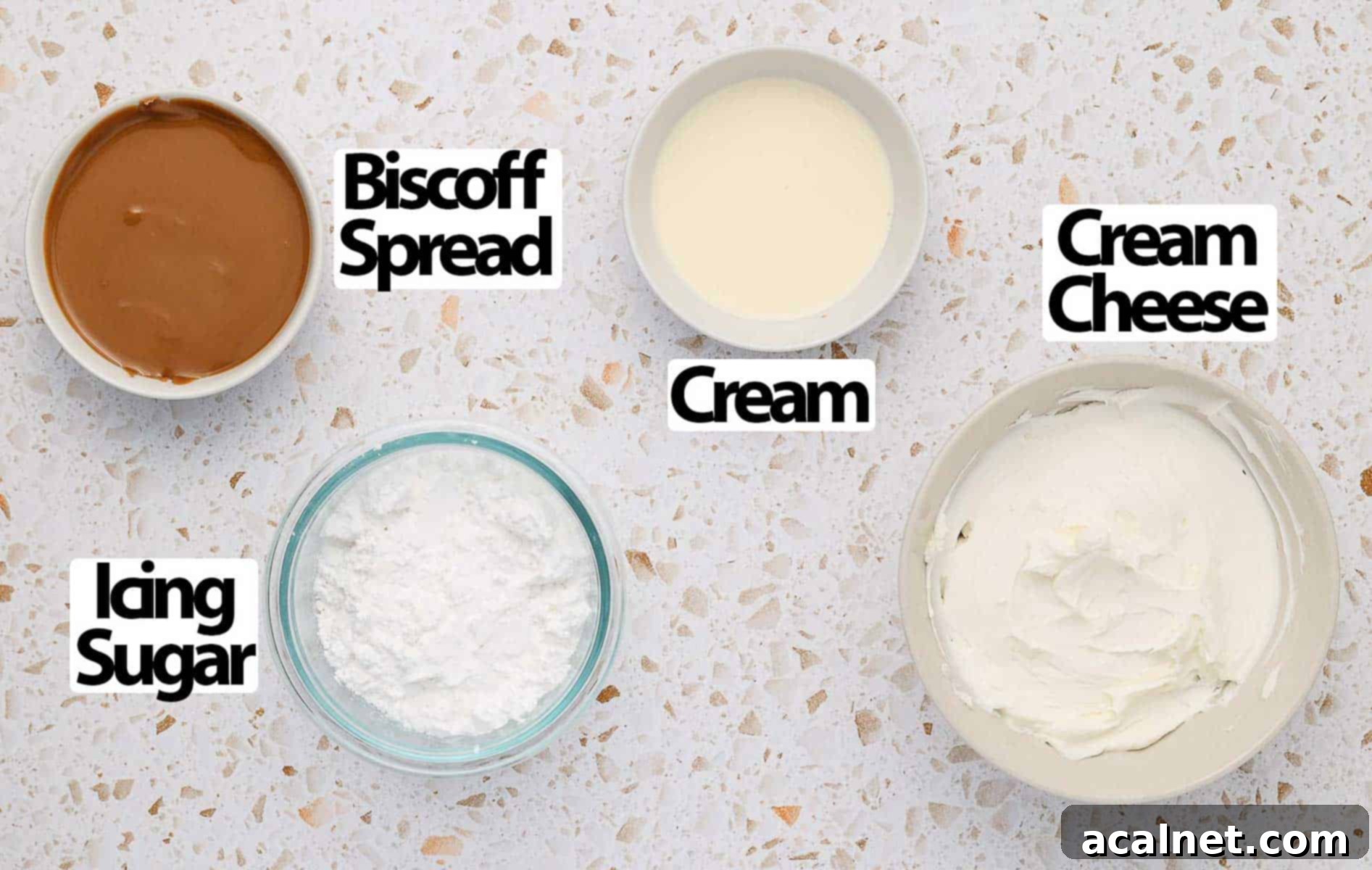
- Cream Cheese: For a lump-free and perfectly smooth frosting, it is absolutely crucial that your cream cheese is at room temperature and soft. This ensures it blends effortlessly with the other ingredients, preventing any curdled appearance. Always opt for full-fat block cream cheese for the best texture and stability; low-fat versions often contain too much water and can make the frosting runny.
- Biscoff Spread: Also known as Cookie Butter or Speculoos Spread. This is the star of our show, providing that signature caramelized spice flavor. You’ll need to gently melt it in the microwave until it’s quite fluid. This step helps it incorporate smoothly into the cream cheese mixture. However, be sure to let it cool down a bit before adding it – if it’s too hot, it can melt the cream cheese.
- Icing Sugar (Powdered Sugar / Confectioners’ Sugar): This provides sweetness and contributes to the frosting’s structure. It’s essential to sift your powdered sugar before adding it to avoid any lumps. Powdered sugar tends to clump easily, and sifting ensures a silky-smooth finish to your Biscoff cream cheese frosting.
- Heavy Cream (Thickened Cream): You’ll only need a small amount, but it’s key to achieving the desired creamy, pipeable consistency. Ensure you use full-fat heavy cream (at least 35% milk fat) – light cream simply won’t provide the richness or stability needed for a firm, luscious frosting. It helps to bring the cream cheese frosting together without making it overly stiff.
Unlike many traditional buttercreams, this recipe cleverly bypasses the need for unsalted butter or egg whites, simplifying the process without compromising on flavor or texture. It’s a wonderfully stable and rich cream cheese frosting that lets the Biscoff flavor truly shine.
Optional Flavor Enhancements
- Vanilla Extract: For an added layer of warmth and complexity, consider stirring in about 1/2 teaspoon of good quality Vanilla Extract or Vanilla Essence. It beautifully complements the spicy notes of Biscoff.
- Spices: To intensify the authentic Speculoos cookie taste, you can add a small amount of Speculoos Spice Mix (about 1/4 teaspoon). This blend of cinnamon, nutmeg, cloves, and ginger can be a bit tricky to find, but it’s worth it if you can! Alternatively, a pinch of ground cinnamon or a mixed spice blend will work wonderfully to enhance that classic Biscoff warmth.
- Salt: Just a tiny pinch of fine table salt or sea salt can make a big difference. It helps to balance the sweetness of the frosting, making the flavors pop and preventing it from being cloyingly sweet.
Crafting Your Perfect Biscoff Cream Cheese Frosting
Making this cookie butter frosting is genuinely straightforward, suitable for even novice bakers. You can achieve excellent results using either a stand mixer equipped with the paddle attachment or a large mixing bowl with a hand mixer. The key is to ensure all ingredients are at the correct temperature for a smooth, lump-free finish.
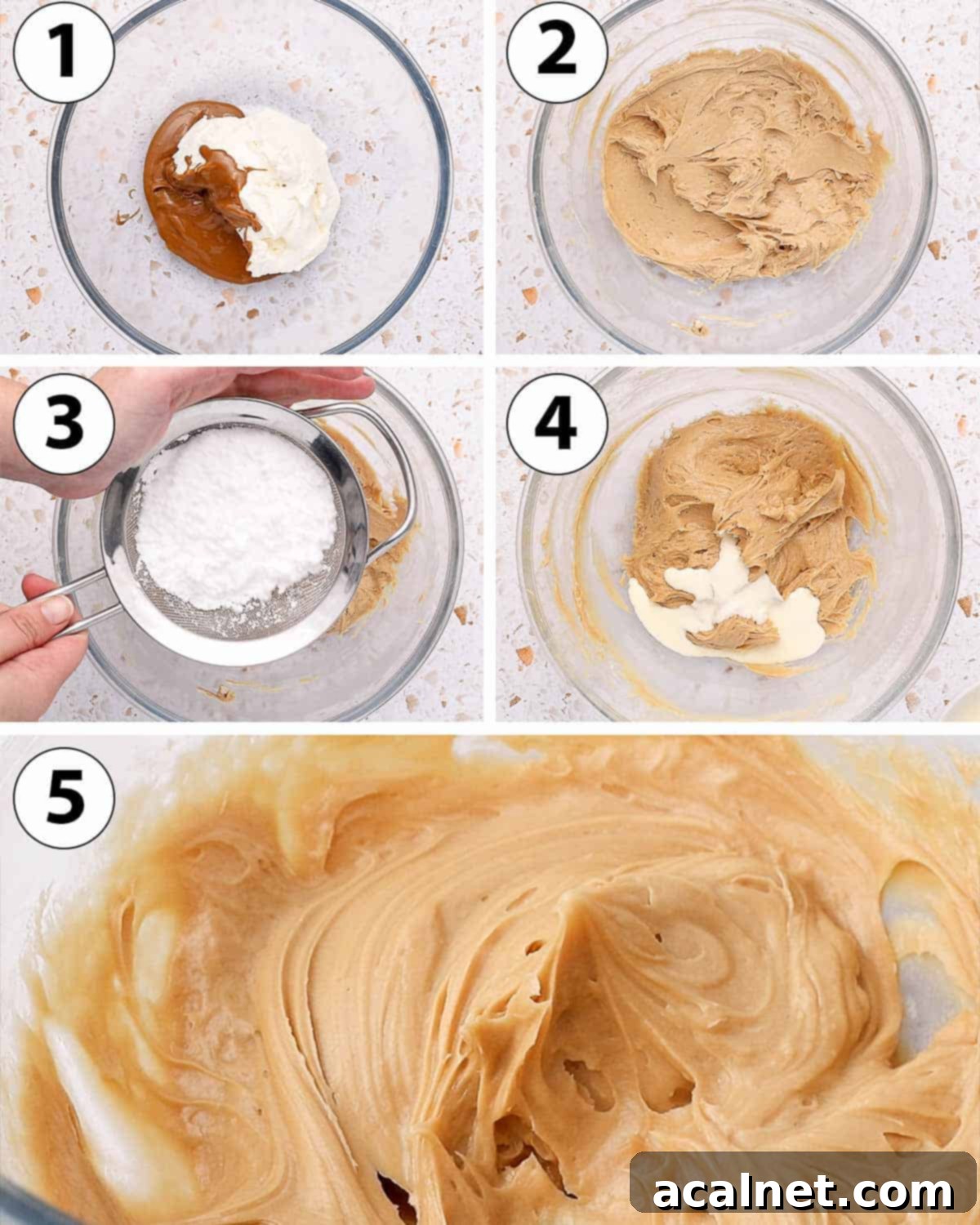
Here are the detailed step-by-step instructions to ensure your frosting comes out perfect:
- First, gently melt the Cookie Butter or Biscoff Spread in the microwave. Heat it in short bursts (15-30 seconds) until it becomes liquid and easily pourable. Once melted, set it aside for about 5 minutes to cool slightly. It should be fluid but not hot to the touch, as excessive heat can cause the cream cheese to separate.
- Photo 1: In a large mixing bowl (if using a hand mixer) or the bowl of your stand mixer, combine the room-temperature Cream Cheese and the cooled Biscoff Spread. Ensure your cream cheese is soft; cold cream cheese will lead to a lumpy frosting.
- Photo 2: Begin mixing on medium-high speed. If using a stand mixer, attach the paddle attachment (not the whisk). Mix for 2 to 3 minutes, or until the cream cheese and cookie butter are fully combined and completely smooth, with no lumps visible. Scrape down the sides of the bowl once or twice during this process to ensure everything is evenly incorporated.
Pro Tip: I highly recommend using the paddle attachment or beaters on a hand mixer rather than a whisk attachment for this recipe. We’re aiming for a dense, creamy texture, not to incorporate a lot of air. Over-whipping can make cream cheese frosting too airy and less stable. Mixing just until lump-free is key. If your cream cheese is too cold, it will be much harder to achieve a smooth consistency.
- Photo 3: Sift the Icing Sugar directly into the bowl over the cream cheese mixture. Sifting is vital here to prevent any powdered sugar lumps from forming in your silky frosting. Start mixing on low speed to avoid a cloud of sugar, then increase to medium speed until it’s just combined. Don’t overmix. Always stop to scrape down the sides and bottom of the bowl as needed to ensure all ingredients are fully blended.
- Photo 4: Now it’s time to adjust the consistency. Add the Heavy Cream, starting with 2 tablespoons. Depending on how thick or light you prefer your frosting, you might add up to 3 tablespoons, or even a little more for a super soft, spreadable consistency. Always use full-fat cream for the best results.
- Photo 5: Mix on medium speed until all the ingredients come together, and your Biscoff cookie butter frosting reaches a smooth, thick, and creamy consistency. It should resemble a rich, thick whipped cream that holds its shape well. Avoid overmixing once the cream is added, as this can sometimes thin out the frosting.
- Your delicious frosting is now ready! Transfer it into a piping bag fitted with your desired nozzle to decorate cupcakes or cakes, or use an offset spatula for spreading. If you’re not using it immediately, place the frosting in an airtight container and store it in the refrigerator until you’re ready to frost your baked goods.
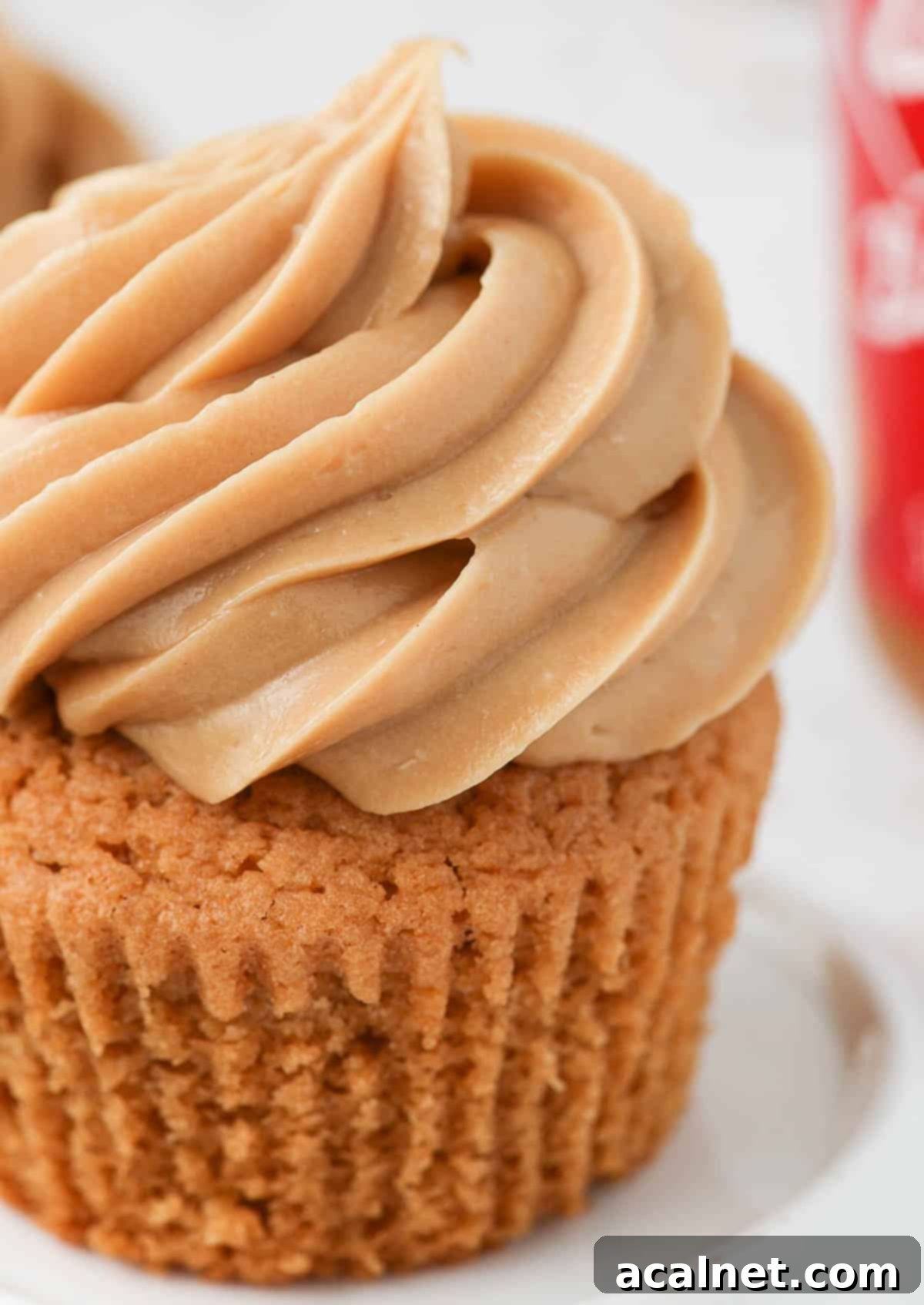
Common Questions About Biscoff Cream Cheese Frosting
Cookie Butter, often labeled as Lotus Biscoff Spread or Speculoos Spread, is a delightful sweet spread made from finely crushed Speculoos cookies (a type of spiced shortcrust biscuit) blended with vegetable oil. Its consistency is very similar to peanut butter, but its flavor is uniquely sweet, caramelized, and distinctly spiced with cinnamon, nutmeg, cloves, and ginger. It’s truly a spreadable cookie in a jar!
Yes, essentially, they refer to the same type of spread! “Biscoff” is the brand name used by the Belgian company Lotus Bakeries for their popular Speculoos spread. “Cookie Butter” is the generic term used by other brands or simply to describe the product in general. Both are made from crushed Speculoos cookie crumbs mixed with oil. While recipes might slightly vary between brands, you can generally interchange Lotus Biscoff Spread and other “cookie butter” brands when baking with confidence.
Absolutely! This Biscoff cream cheese frosting is wonderfully stable, yet maintains a deliciously light and creamy texture. This makes it incredibly versatile. It can be easily piped over cupcakes as a topping, used to generously frost the entire exterior of a cake, or layered beautifully between sponge cakes as a rich and flavorful filling. Its stability ensures your cake layers stay put.
One of the great advantages of this recipe is that the cookie butter itself contributes significant sweetness and also helps stabilize the cream cheese frosting. This means you don’t need to add an excessive amount of powdered sugar! The cream cheese also provides a lovely tang that perfectly balances the sweetness. If you prefer a sweeter frosting, you can certainly increase the quantity of icing sugar, but be mindful that you might also need to slightly increase the amount of heavy cream to maintain a smooth, workable consistency.
Yes, you can! This frosting holds up very well when made in advance. Simply prepare it as directed, then transfer it to an airtight container and store it in the refrigerator for up to 3 days. Before using, allow it to come to room temperature for about 15-20 minutes, then give it a quick whisk by hand or with a spatula to restore its creamy texture.
Lumpy frosting is usually caused by cold cream cheese or unsifted powdered sugar. If you find your frosting has lumps, try mixing it longer at a slightly higher speed. If lumps persist, you can gently warm the bowl over a bain-marie (hot water bath) for a minute or two to soften the cream cheese further, then continue beating. Sifting your powdered sugar thoroughly before adding is the best preventative measure.
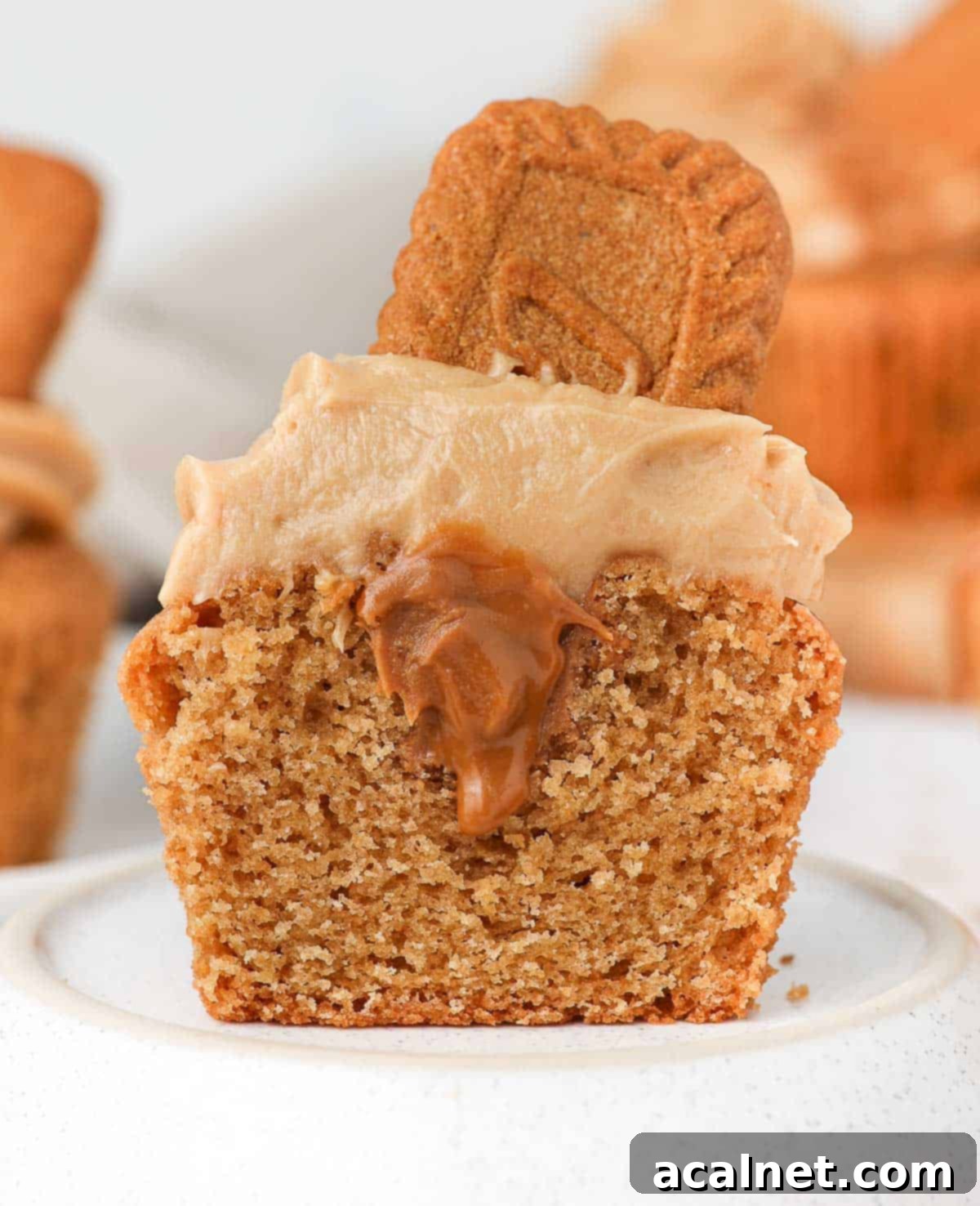
Expert Tips for the Best Biscoff Cream Cheese Frosting
Achieving a flawless Biscoff cream cheese frosting is simple with these key tips:
- Temperature is Everything: The most crucial tip for avoiding a lumpy frosting is ensuring your cream cheese is at true room temperature. Take it out of the fridge at least 30-60 minutes before you plan to start. Soft, pliable cream cheese blends smoothly, while cold cream cheese will resist mixing and create unwelcome lumps. Similarly, always sift your icing sugar to remove any pre-existing clumps.
- Melted Biscoff, Cooled: When melting your Biscoff spread, ensure it’s fluid but not hot. A hot spread can melt the cream cheese, leading to a runny or separated frosting. Let it cool for a few minutes before adding it to the cream cheese.
- Avoid Over-Mixing Air: Unlike some buttercreams, this cookie butter frosting doesn’t benefit from excessive whipping. We’re not trying to incorporate a lot of air. Mix only until the ingredients are well combined and lump-free. Over-mixing, especially once the cream is added, can sometimes cause the frosting to become too thin or lose its stability.
- Control the Consistency with Cream: For a wonderfully thick frosting that holds its shape perfectly for piping, start with only 2 tablespoons of Heavy Cream. If you desire a lighter, creamier, or more spreadable frosting, gradually add more cream, one tablespoon at a time, until you achieve your preferred consistency.
- Scrape the Bowl: Don’t forget to stop your mixer periodically and use a spatula to scrape down the sides and bottom of the bowl. This ensures all ingredients are fully incorporated and prevents streaks of unmixed cream cheese or sugar.
Creative Ways to Enjoy This Biscoff Frosting
This Biscoff Cookie Butter Cream Cheese Frosting is incredibly versatile and can be used in countless delightful ways:
- Cakes & Cupcakes: It’s a sensational filling or frosting for all types of cakes. Use it to crown your Easy Biscoff Cake or spread it generously over Biscoff Cupcakes. It pipes beautifully for intricate decorations!
- Cheesecakes & Bars: A dollop on Mini Biscoff Cheesecakes or swirled onto Biscoff blondies or brownies adds an extra layer of decadence.
- Cookies & Sandwich Cookies: Frost individual cookies or use it as a rich, spiced filling to create gourmet sandwich cookies.
- Breakfast & Brunch Enhancer: Drizzle or spread it over warm pancakes, waffles, or crepes for a special breakfast treat.
- Fruit Dip: Serve it alongside apple slices, pear wedges, or other fresh fruits for a surprisingly delightful and indulgent dip.
- Choux Pastry Filling: Fill eclairs or cream puffs with this unique frosting for a sophisticated dessert.
Storing & Freezing Your Biscoff Frosting
Proper storage ensures you can enjoy this delicious Biscoff cream cheese frosting for days to come or save it for a future baking project:
This homemade cookie butter cream cheese frosting should be stored in an airtight container in the refrigerator for up to 3 days. Once you use it to frost cupcakes, cakes, or other baked goods, these items should also be kept refrigerated to maintain freshness and stability, especially due to the cream cheese content. Allow frosted items to come closer to room temperature for about 15-20 minutes before serving for the best texture and flavor.
For longer storage, this frosting freezes beautifully. Simply transfer it to a freezer-friendly container or a heavy-duty freezer bag, ensuring there’s minimal air to prevent freezer burn. It can be frozen for up to 1 month. When you’re ready to use it, thaw the frosting in the refrigerator overnight. Once defrosted, it might appear a little loose or separated. Don’t worry! Just give it a good re-mix with a whisk or spatula until it becomes smooth and creamy again, ready for piping or spreading.
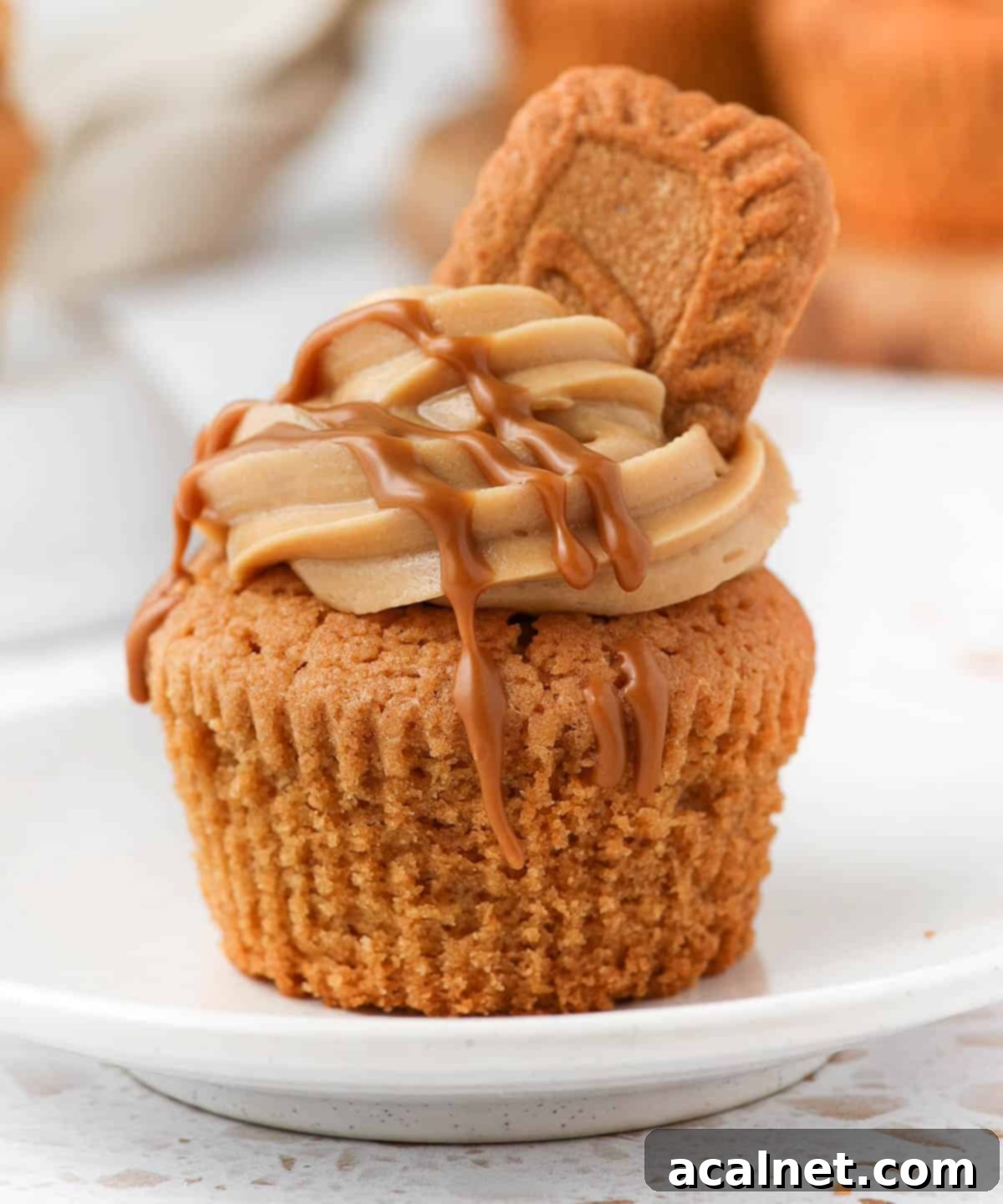
Explore More Delicious Biscoff Recipes
If you’ve fallen in love with the irresistible flavor of Biscoff, then you’ll definitely want to try these other amazing recipes:
- Easy Biscoff Cake
- Cookie Butter Ice Cream
- Mini Biscoff Cheesecakes
- Biscoff Butter Cookies
- Biscoff Brownies
- Baked Biscoff Cheesecake
- Biscoff Truffles
- Easy Biscoff Donuts
Made this recipe?
Let us know if you liked it by leaving a comment below, and tag us on Instagram @a.baking.journey with a photo of your creation!
Recipe Card: Biscoff Cookie Butter Cream Cheese Frosting

Biscoff Cookie Butter Cream Cheese Frosting
Servings: 1 batch (about 500 grams of frosting)
Author: Sylvie
Print Recipe
Prevent your screen from going dark
Ingredients
- 250 gr (9 oz) Cream Cheese, at room temperature, full-fat block
- 150 gr (1/2 cup + 2 tablespoons) Biscoff Spread, or cookie butter, slightly melted and cooled
- 100 gr (1 cup) Icing Sugar, sifted (powdered sugar)
- 30 to 45 ml (2 to 3 tablespoons) Heavy / Thickened Cream, full-fat (35% milk fat minimum)
- 1/2 tsp Vanilla Extract, (optional)
- 1/4 tsp Speculoos Spice Mix or Cinnamon, (optional)
- Pinch Fine Table Salt, (optional)
Instructions
- Slightly melt the Biscoff Spread in the microwave until liquid. Set aside to cool down for 5 minutes (it should be fluid but not hot).
- In a large mixing bowl (or stand mixer with paddle attachment), combine the room-temperature Cream Cheese and cooled Biscoff Spread. Mix on medium-high speed for 2 to 3 minutes, until fully combined and completely smooth with no lumps (see note 1). Scrape down the sides of the bowl.
- Sift in the Icing Sugar (and optional vanilla/spices/salt). Mix on low to medium speed until just combined. Scrape the sides and bottom of the bowl if required.
- Add 2 tablespoons of Heavy Cream and mix until smooth. If the frosting seems too thick or you desire a lighter consistency, mix in one more tablespoon of cream (See note 2). The frosting should resemble the texture of a thick whipped cream, holding its shape nicely.
- Use the frosting straight away or store it in an airtight container in the fridge for up to 3 days.
Video
Would you like to save this recipe?
We’ll email this post to you, so you can come back to it later!
Notes
- It’s best to use the paddle attachment on a stand mixer or beaters on a hand mixer, rather than a whisk attachment, as we are not trying to add a lot of air into the mixture. The goal is a dense, creamy frosting. Mixing only until lump-free is sufficient. If the cream cheese is too cold, it will be much harder to achieve a smooth consistency, so ensure it’s at room temperature.
- Starting with 2 tablespoons of heavy cream should yield a frosting thick enough to pipe and hold its shape beautifully. If you prefer a lighter, more spreadable consistency, you can gradually add more cream, one tablespoon at a time, mixing briefly after each addition until you reach your desired texture. Be cautious not to overmix, as this can sometimes thin the frosting.
- For best results, ensure your cream cheese is full-fat and block-style. Low-fat or spreadable cream cheese often contains too much water, which can make your frosting runny and unstable.
- If using optional spices like Speculoos mix or cinnamon, add them with the icing sugar to ensure even distribution.
Nutrition (per serving)
